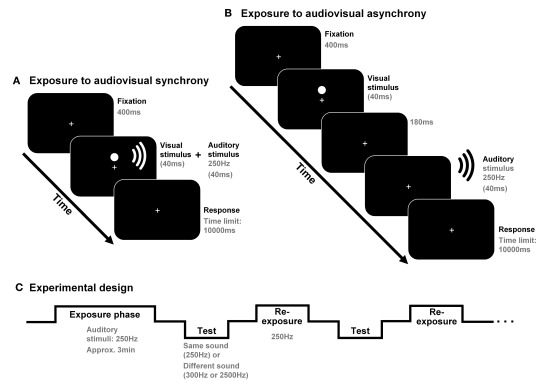Figure 1.
Participants were exposed, for approximately 3 min, to audiovisual synchrony (in one block) or asynchrony [in another block; see (A,B), respectively]. The possible effects of adaptation to asynchrony were obtained in a posterior test phase in which the participants performed simultaneity judgments (SJs) regarding audiovisual stimulus pairs including the same tone as the one presented during the exposure phase (250 Hz) or else another tone (300 or 2500 Hz). Eight re-exposure audiovisual stimulus pairs (including 250 Hz tones) were presented every three SJ trials [see (C)].

